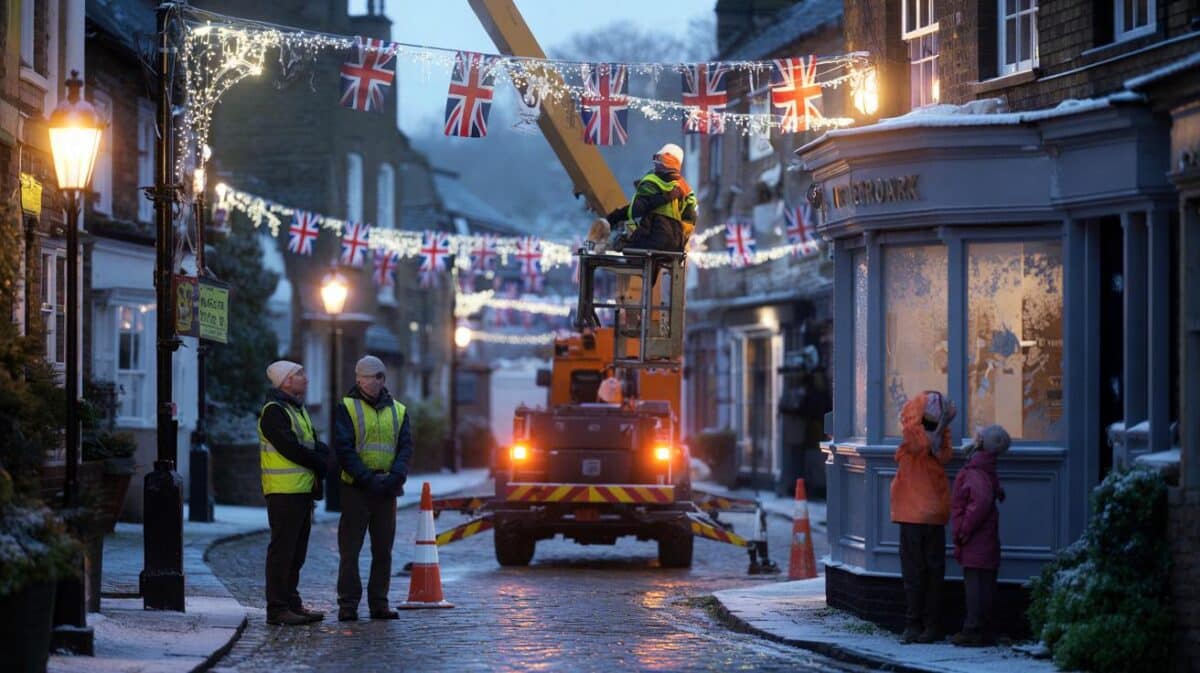Not because of a new motorway, not because of a factory closure. They’re leaving for a stranger reason. Beneath their gardens and crumbling lanes lies a landscape that hasn’t uttered a sound for roughly 700,000 years — until the sea began peeling it open. The ground keeps slipping, the waves keep talking, and the silence of prehistory is pushing the living away.
At first light in north Norfolk, the sea looks like brushed steel. Gulls wheel. A For Sale board tilts into the wind at the end of a lane that no longer quite reaches the cliff. You can hear the hollow thud of boxes being set down in a van, the thin laughter you make when things get real. Down on the beach, a storm has torn a ragged seam through the sand, exposing dark beds of ancient peat and flecks of flint that don’t belong here — not in our time, anyway. A neighbour points to the line where the cliff was last winter. Then she points to where it was five winters ago. The distance is a memory. The insurance letter on her mantelpiece is not.
What people are really leaving is a silence older than our words.
The silence underfoot is speaking, and people are moving
Walk the edge at Happisburgh and you’ll see it: the coast is unspooling like a hem, stitch by stitch. Each storm pulls a little more from the past and tosses it up with the seafoam — wood darkened to coal by ages, animal bones, the occasional hand-worked flake of flint. It’s eerie. It’s also a practical problem you can’t ignore when the cliff keeps stepping back toward your kitchen. Some residents call it a slow eviction. The irony bites: a landscape that stayed quiet for hundreds of thousands of years is now speaking through collapse. People say the sea is taking what was always its own. The bank manager says the mortgage terms have changed.
There are numbers to hold onto, even if they don’t hold for long. Parts of this coast have shed a metre or two a year on average, sometimes more when winter goes hard and the wind swings round. In 2013, researchers near Happisburgh documented human footprints preserved in foreshore mud, dating to roughly 800,000 years ago; after a few tides, they were gone. A village like Fairbourne in Gwynedd has been told to plan for “decommissioning” by mid-century because of future flood risk. Some homeowners here are doubling premiums or losing cover entirely. You can feel the maths turning on people. Values drop. Options shrink. Vans come.
What’s actually happening is a pile-up of forces — climate, geology, policy — all meeting us at once. The cliffs in this stretch are **soft-boulder clay**, stitched with sand and gravel, easy pickings for a restless sea. Warmer air stacks energy into the storms and lifts sea levels millimetre by millimetre, a small rise that becomes brutal when multiplied by wind and tide. Longshore drift keeps shunting sediment away, starving one place to feed another. Local Shoreline Management Plans set a hard-to-hear direction: hold the line where the economics work; step back where they don’t. That last bit isn’t a sentence you see on a signboard. It’s more of a silence you feel in your council letterbox.
How people are coping, moving and making peace with deep time
There’s a method to leaving well, even when you didn’t plan on leaving at all. Communities on this coast are getting good at rapid documentation — mapping cracks, photographing thresholds, collecting house histories before the ridge tiles start to tilt. Parish halls become hubs where solicitors and surveyors sit with tea, and someone brings homemade cake because you need something ordinary to hold. If you’re staying for now, simple tactics help: raising sockets, keeping valuables in plastic crates, shifting the heaviest furniture inward by half a metre. Small moves buy time. They also give a sense of agency when the horizon feels like it’s leaning in.
We’ve all had that moment when a favourite street or view suddenly feels temporary. The tricky bit is not freezing when the letter arrives or the first crack runs across a familiar wall. Talk early to lenders and brokers; some will show flex if you show a plan. Ask your parish clerk about hardship funds and the little-known grants that don’t make headlines. And speak to neighbours, even the gruff one with the spaniel; local WhatsApp groups are saving people days of guesswork. Let’s be honest: nobody does that every day. But the surprise is how much easier it gets when you stop doing it alone.
“You tell yourself it’s just weather, and then you wake up and the garden you barbecued in last summer is on the beach. That’s the day we decided we’re not waiting for another letter.” — Claire, 42, leaving the family bungalow two streets from the cliff
This coast teaches a hard lesson gently: plan in layers. Keep a go-bag that’s boringly practical. Draw your own line in the sand about when you’ll move. Share it with your people so they’re not guessing while you’re panicking. And take the time to sit with the place, to say a quiet thanks.
- Photograph every room before you pack a box.
- Scan vital documents to the cloud and a USB stick.
- Ask the council about **managed retreat** wording in your SMP zone.
- Call insurers with dates and evidence, not vibes.
What 700,000 years of silence asks of the rest of us
Maybe this is what deep time does when it finally reaches us. It turns a cliff into a story and dares us to read it while the ink still runs. The silence underfoot — the **the silence underfoot** we barely knew was there — isn’t a villain. It’s the stage. We’re the noisy bit that flickers and passes. Yet there’s also policy in this poetry. Town Halls choosing where to reinforce and where to step back. Developers tempted to sell the dream with a sea view that has an expiry date. Schools teaching children to love the coast and also to measure it. *A place can break your heart and still be the best teacher you’ll ever have.*
People leaving these villages aren’t running from the past. They’re responding to it, and to the weather that now carries the future on its back. If you’re reading this far from the waterline, this isn’t just their story. It’s a rehearsal. What we build, insure, map and remember next will decide how many vans arrive in the dawn light, and how many front gardens become beaches that stegosaur across the news for a tide or two before disappearing again. Share this with someone who thinks the coast is a postcard. Ask them what they’d take if the sea knocked twice.
| Key points | Detail | Interest for the reader |
|---|---|---|
| Erosion reveals deep-time Britain | Storms expose peat beds, bones and tools dating around 700,000–850,000 years | Connects today’s headlines to a mind-stretching past |
| Communities are moving | Insurance tightens, values fall, some areas earmarked for “managed retreat” | Practical insight for homeowners and renters near risk zones |
| How to act now | Document, speak early to lenders, plan layered exits, lean on local networks | Actionable steps that calm the chaos and save money |
FAQ :
- What does “700,000 years of silence” actually mean?It’s shorthand for the deep-time layers beneath these villages — sediments and footprints dating roughly 700,000–850,000 years — now exposed as erosion accelerates.
- Which UK places are most affected right now?Hotspots include parts of the Norfolk and Suffolk coasts, the Holderness stretch in East Yorkshire, and communities like Fairbourne in Gwynedd facing future flood risk.
- Is coastal erosion covered by home insurance?In most cases, no. Flooding can be included, partly via schemes like Flood Re, but erosion is usually excluded. That gap shapes hard decisions.
- Is moving inevitable for everyone near the edge?Not always. Some front lines will be defended. Others will switch to realignment or no active intervention. Local Shoreline Management Plans explain the likely path.
- How can I visit these sites without adding to the problem?Stick to marked paths, don’t climb unstable cliffs, and never remove finds from protected foreshore. Support local cafés and lifeboat stations; ask before photographing people’s homes.









